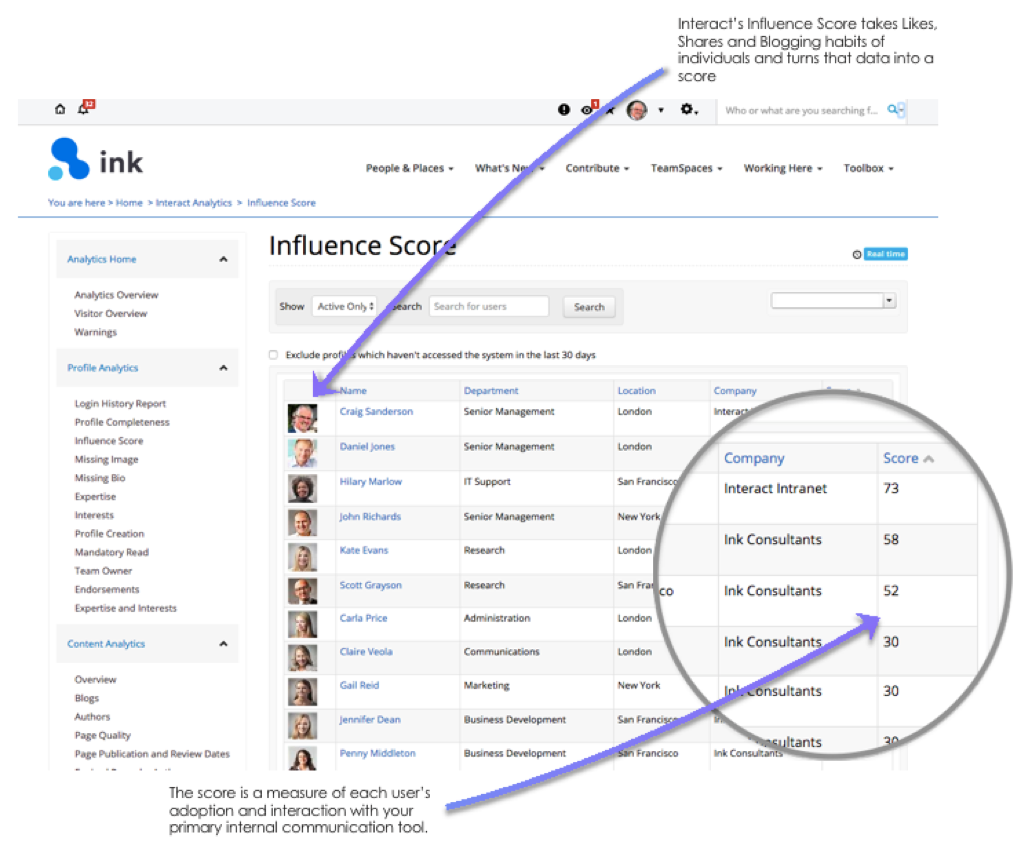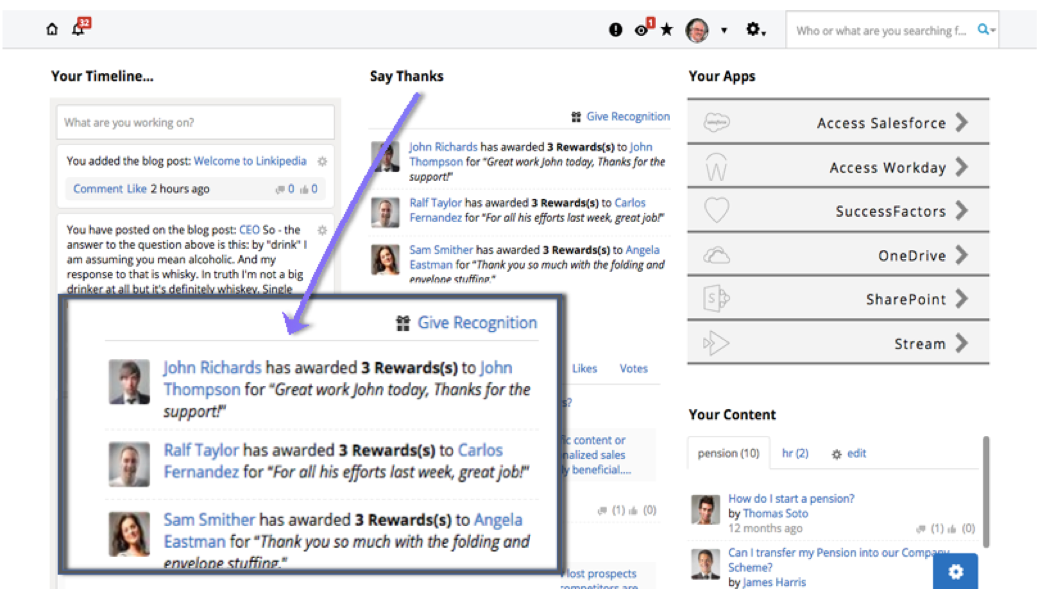If you’ve ever been responsible for creating a website’s worth of content all by yourself, then you know exactly how difficult that task can be. Even with smaller teams made up of writers, editors and the like, creating a train of ongoing content is a challenging prospect.
This does not even begin to include the added difficulty of creating engaging content. Listed as one of the top 5 marketing challenges (60%), producing truly engaging content can prove stressful when it’s under the banner of one individual or small team. According to Content Marketing Institute, 50 percent of B2B and 44 percent of B2C content marketers say they struggle to create content consistently.
To help combat this grim and constant struggle, why not share the responsibility of creating content with the substantial and experienced voices of your organization – your staff.
Employees are important and trusted voices in an organization for two strong reasons: authenticity and validity. Employee-generated content is quickly becoming one of the most valuable forms of marketing content.
In fact, Edelman’s research on the trust barometer shows that company experts are trusted 66% of the time. More than 10% higher than the 47% of citizens that trust corporate advertising. Considering that 92% of people are more likely to trust a recommendation from another person over branded content makes it clear just how much value is behind the concept of Employee Generated Content (EGC).
But why are the people more interested in first-person accounts rather than the content carefully crafted by their organization?
The answer is simple. There is a power behind ‘real’.
Real stories. Real advice. Real people. Adding that level of authority to your content by bringing aboard stories from your most experienced or involved staff has the power to engage more employees through its genuineness.
Speaking quantitatively, one single employee sharing three items of content a day can add up to 23 million in additional reach over the course of a year. Making employees your content creators supports the need for trustworthy and ‘real’ content in the workplace and adds an element of validity to your communications that can engage and be shared among staff.
But the question remains, how do we begin to get them involved? Let’s start with why we should.
On the scale of great communications, the pros of EGC outweigh the cons:
| PROS | CONS |
| Fewer costs, free up the marketing budget | Need alt incentive for content makers |
| Increased versatility and time management | Harder to strategize long-term marketing plan |
| Authentic & trusted content | Less control over posted content |
| More inclusive company culture | |
| Increased employee engagement |
Any way you look at it, incorporating employee-generated content is a win-win for a business. Now let’s address the challenge of getting employees onboard.
Employees know that, with their connection to customers, experiences, and knowledge of the organization, their stories have the relevance that organizational content is missing. Here are some tips on turning your employees into internal influencers.
Find the right people
Finding the right contributors is usually your first challenge. Not every employee is going to be the best choice for an internal content maker. Not to say that every employee does not hold valuable information. Rather, not every member of your staff is going to be interested in sharing or writing informatively about their experiences.
So, how about considering someone who is already an engaged and vocal part of your company?
Using your company intranet, you should be able to find user profiles of the employees that contribute and interact most with your communication tools. Whether it be through likes, shares or blogging, your intranet can take that data and turn it into a score. This ‘Influence Score’ is a great way to find the people who are already actively engaging and sharing with their colleagues.

That passion and desire to communicate is fundamental for your employees to develop into great internal influencers. Don’t forget, EGC is all about valid and genuine stories so you’ll want to bring in people who are genuinely interested in creating content.
Give them a platform
Once you’ve identified your content makers the next step is to give them a place to share their experiences. The best place for this would be on your company intranet. Not only is it easily accessible for the entire organization but it also is a controlled environment where suitable insights can be made public.
Having a place to gather all the produced content makes both creators and readers feel like part of one big inner circle. Engagement boosts as readers instantly know where to go to find content and influencers feel a sense of pride by providing these insights.
Content does not need to be restricted to your intranet; opening up integrated and social mediums like the company Instagram or Twitter account can widen the visibility of your content and truly show off your company culture.
Reward your influencers
Even the most noble internal creators tend to wonder if they are creating for a good cause. Most often that leads to the common question – “What’s in it for me?”.
Don’t make your employees question the benefits of their involvement. Any good relationship is mutually beneficial whether it be employee-to-employer or peer-to-peer.
Here at Interact, our Intranet Rewards tool is a good way for employees to recognize each other’s good work by giving points. You may also decide to have those points amount to a prize over time or just be indicative of people going the extra mile. That simple one-click action to reward someone goes a long way in making influencers feel appreciated.

You can place an Intranet Rewards widget on your intranet homepage to make it instantly accessible for your employees. If employees reap the benefits from their content creations, they are more likely to contribute consistently.
Give clear guidelines
One would think that rules would put pressure on potential content makers, but the opposite proves true. For those individuals struggling over what to write, clear guidelines can take the pressure off of them making it easier to address topics they know are acceptable and approved.
At times the hardest part of writing is just getting started. Guidelines assist those employees suffering from writer’s block by encouraging them to write first and then clean it up per the guidelines later.
To get the most out of your EGC, make clear content guidelines, release a style guide and make sure your employees can adequately capture the tone of the organization.
Want to make contributing even easier? Try gathering up some ideas for content in advance. Arranging future ideas into a content calendar can give influencers ideas about topics waiting to be written and shared.
Explore different forms of content
Content is more than just blog posts and forums. With technology, content has expanded to all kinds of mediums including video, infographics, and even memes. According to some assessments, video content will make up 80 percent of internet traffic in a few years-why not take advantage.
Encouraging your staff to contribute means accepting more than 500 words on a blog post. Instead, fostering a culture where your influencers are free to submit whatever form of content interests and inspires them is the key to successful EGC.
Letting employees share more than just the standard forms of content results in better quality content and increases overall engagement in your more tech-savvy and advanced staff.
Bottom Line
Nurturing EGC is unmistakably beneficial for both the organization and its employees. By giving your staff the opportunity to be the creators, you inspire them to get more involved in the organizational culture while simultaneously becoming the voice for your company brand.
Who better to showcase the best your organization has to offer, and it’s much better than your brand continuously talking about itself. Content shared by employees receives eight times more engagement than content shared by brand channels. Deliver content that the people can trust.
Train employees in the best ways to produce good content. By showing them what makes an excellent post, video and more, the organization can have more confidence and rely more on their EGC.




